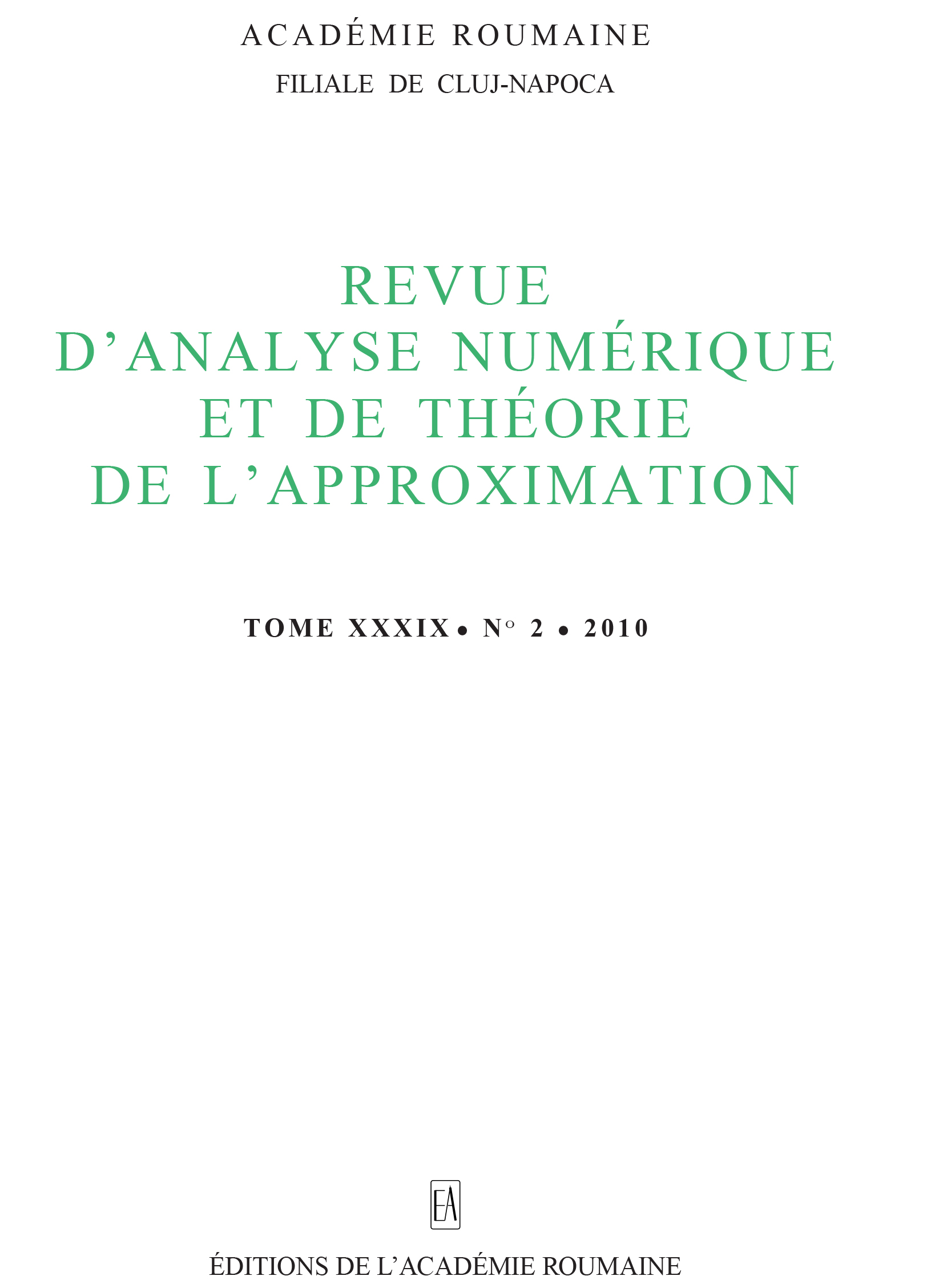Conjugate heat transfer in a vertical channel filled with a nanofluid adjacent to a heat generating solid domain
DOI:
https://doi.org/10.33993/jnaat392-1033Keywords:
nanofluid, vertical channel, free convection, conjugate heat transfer, heat generationAbstract
The effect of thermal dispersion in the conjugate steady free convection flow of a nanofluid in a vertical channel is investigated numerically using a single phase model. Considering the laminar and fully developed flow regime, a simplified mathematical model is obtained. In the particular cases when solid phase and thermal dispersion effects are neglected the problem was solved analytically. The numerical solution is shown to be in excellent agreement with the close form analytical solution. Nusselt number enhancement with the Grashof number, volume fraction, aspect ratio parameter and thermal diffusivity constant increasing has been found.Downloads
References
W. Aung, Fully developed laminar free convection between vertical plates heated asymmetrically, Int. J. Heat Mass Transfer, 15, pp. 1577-1580, 1972, https://doi.org/10.1016/0017-9310(72)90012-9 DOI: https://doi.org/10.1016/0017-9310(72)90012-9
W. Aung, L.S. Fletcher, V. Sernas, Developing laminar free convection between vertical flat plates with asymmetric heating, Int. J. Heat Mass Transfer, 15, pp. 2293-2308, 1972, https://doi.org/10.1016/0017-9310(72)90048-8 DOI: https://doi.org/10.1016/0017-9310(72)90048-8
A. Barletta, Analysis of combined forced and free flow in a vertical channel with viscous dissipation and isothermal-isoflux boundary conditions, J. Heat Transfer, 121, pp. 349-356, 1999, https://doi.org/10.1115/1.2825987 DOI: https://doi.org/10.1115/1.2825987
H.C. Brinkman, The viscosity of concentrated suspensions and solutions, J. Chem. Phys., 20, pp. 571-581, 1952, https://doi.org/10.1063/1.1700493 DOI: https://doi.org/10.1063/1.1700493
W. Daungthongsuk, S. Wongwises, A critical review of convective heat transfer of nanofluids, Renewable and Sustainable Energy Reviews, 11, pp. 797-817, 2007, https://doi.org/10.1016/j.rser.2005.06.005 DOI: https://doi.org/10.1016/j.rser.2005.06.005
A.R.A. Khaled, K. Vafai, Heat transfer enhancement through control of thermal dispersion effects, Int. J. Heat Mass Transfer, 48, pp. 2172-2185, 2005, https://doi.org/10.1016/j.ijheatmasstransfer.2004.12.035 DOI: https://doi.org/10.1016/j.ijheatmasstransfer.2004.12.035
K. Khanafer, K. Vafai, M. Lightstone, Buoyancy-driven heat transfer enhancement in a two-dimensional enclosure utilizing nanofluids, Int. J. Heat Mass Transfer, 46, pp. 3639-3663, 2003, https://doi.org/10.1016/s0017-9310(03)00156-x DOI: https://doi.org/10.1016/S0017-9310(03)00156-X
J.P. Kumar, J.C. Umavathi, A.J. Chamkha, I. Pop, Fully-developed free-convective flow of micropolar and viscous fluids in a vertical channel, Appl. Math. Modell., 34, pp. 1175-1186, 2010, https://doi.org/10.1016/j.apm.2009.08.007 DOI: https://doi.org/10.1016/j.apm.2009.08.007
S. Kumar, S.K. Prasad, J. Banerjee, Analysis of flow and thermal field in nanofluid using a single phase thermal dispersion model, Appl. Math. Modell., 34, pp. 573-592, 2010, https://doi.org/10.1016/j.apm.2009.06.026 DOI: https://doi.org/10.1016/j.apm.2009.06.026
A. Mokmeli, M. Saffar-Avval, Prediction of nanofluid convective heat transfer using the dispersion model, Int. J. Thermal Sci., 49, pp. 471-478, 2010, https://doi.org/10.1016/j.ijthermalsci.2009.09.005 DOI: https://doi.org/10.1016/j.ijthermalsci.2009.09.005
H.F. Oztop, E. Abu-Nada, Numerical study of natural convection in partially heated rectangular enclosures filled with nanofluids, Int. J. Heat Fluid Flow, 29, pp. 1326-1336, 2008, https://doi.org/10.1016/j.ijheatfluidflow.2008.04.009 DOI: https://doi.org/10.1016/j.ijheatfluidflow.2008.04.009
K. Vajravelu, K. Sastri, Fully developed laminar free convection flow between two parallel vertical walls-I, Int. J. Heat Mass Transfer, 20, pp. 655-660, 1997, https://doi.org/10.1016/0017-9310(77)90052-7 DOI: https://doi.org/10.1016/0017-9310(77)90052-7
Y. Xuan, W. Roetzel, Conceptions for heat transfer correlation of nanofluids, Int. J. Heat Mass Transfer, 43, pp. 3701-3707, 2000, https://doi.org/10.1016/s0017-9310(99)00369-5 DOI: https://doi.org/10.1016/S0017-9310(99)00369-5
X.Q. Wang, A.S. Mujumdar, A review on nanofluids-part I: Theoretical and numerical investigations, Brazilian Journal of Chemical Engineering, 25, pp. 613-630, 2008, https://doi.org/10.1590/s0104-66322008000400001 DOI: https://doi.org/10.1590/S0104-66322008000400001
Published
Issue
Section
License
Copyright (c) 2015 Journal of Numerical Analysis and Approximation Theory

This work is licensed under a Creative Commons Attribution 4.0 International License.
Open Access. This article is distributed under the terms of the Creative Commons Attribution 4.0 International License, which permits unrestricted use, distribution, and reproduction in any medium, provided you give appropriate credit to the original author(s) and the source, provide a link to the Creative Commons license, and indicate if changes were made.










